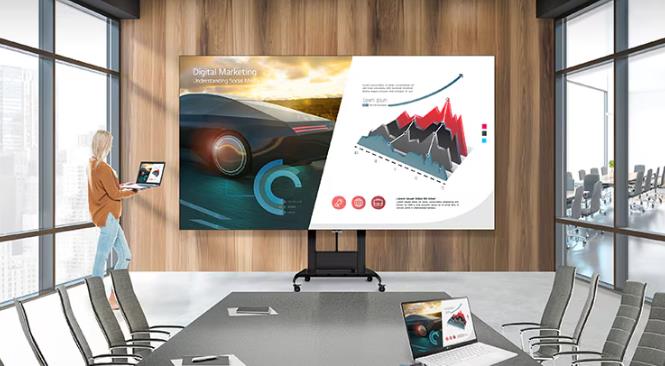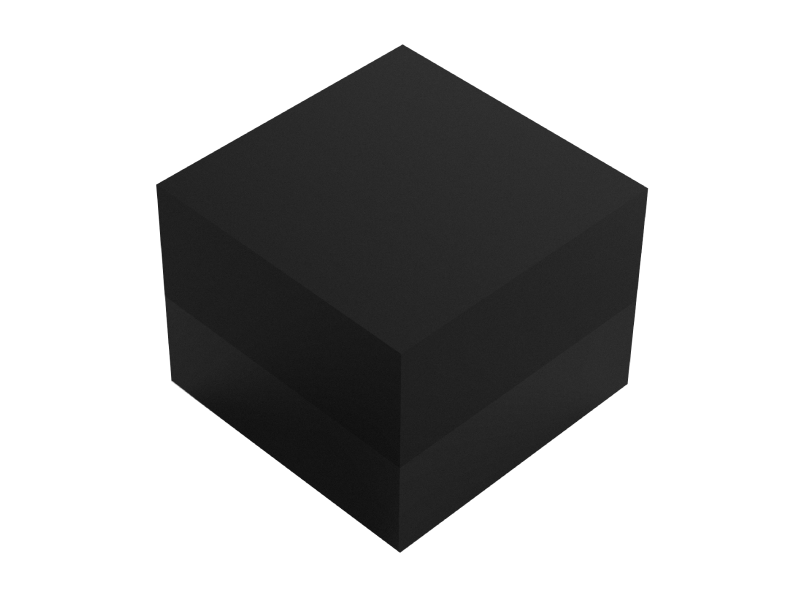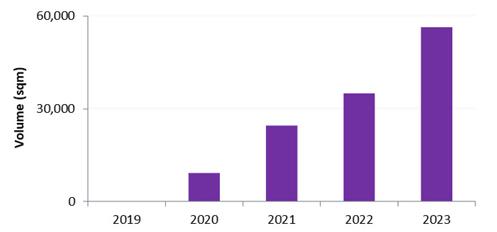All-in-one LED display is more like a fashionable name for us since it only appears in large conference rooms and most of us have much less access to it. And it’s quite natural that we tend to understand it as an LED screen with all components integrated, including the LED screen, power supply, and control system just like an all-in-one computer. And yes, you’re right! An All-in-One LED display is just like what you’re considering. It offers compact design, quick installation, convenient setup for much easier use than a conventional LED display. Now let’s dive in and get a deep understanding of this new LED display technology.

all-in-one LED display
The term “all-in-one” , while being used on an LED display, is not an exaggerated statement for marketing purposes, but refers to a large format LED screen that perfectly integrates the LED display system, image splicing system, power supply system, and the screen control system. It simplifies the use of an LED screen at conferences, exhibitions, and various events.
We can also call it an all-in-one smart LED screen, that is, an LED screen that can realize intelligent interconnection with users instead of simply displaying visual contents.
The LED display system is the primary feature of an all-in-one LED display. Usually, the resolution of an all-in-one LED display reaches 4K or even higher, and it also supports HDR/HLG mode to provide us unparalleled visual experiences.
Another important feature of an all-in-one LED display is that we can increase the screen size by adding more volume of LED panels just like a conventional LED screen.
An all-in-one LED display also has an ultra thin screen, which can be as thin as 25 mm, so it doesn’t occupy too much space and can be easily applied in limited spaces. This is impossible for an LCD screen which requires backlight.

Kinglight MiP LED – perfect choice for HD LED screens
Like conventional LED screens, an all-in-one LED display also adopts a modular design; however, unlike conventional LED screens, it integrates an image stitching system to calibrate and synchronize all its LED display panels to ensure the quality and integrity of the image displayed on the screen and enhance the overall display effect.
In addition, an all-in-one LED screen also integrates panoramic photo synthesis technology similar to that in cameras, that is, by identifying overlapping parts in multiple images and recombining them to create clear high-resolution images.
The third feature of an all-in-one LED screen is the integrated power system. Although this does not seem to be a great improvement, it brings great convenience in daily use.
As we know, LED screens require a stable and reliable power supply to operate properly. One of the most important functions of the power system is the ability to convert the alternating current (AC) from the power outlet into the direct current (DC) used by the LED screen.
When we manually select the power system for an LED screen, we need to have a good understanding of the voltage and wattage required by the LED screen, the core functions, and how to install the power system correctly and safely.
But with power supply system integrated, an all-in-one LED screen eliminates these repetitive steps and reduces risk of abnormal power supply caused issue on a conventional LED screen.
Through its built-in power system, we can achieve easy and fast one-click startup on an all-in-one LED display.
The biggest advantage of an all-in-one LED display over a conventional LED display is the control system being integrated into the screen.
Through the integrated control system, all-in-one LED displays concentrate and fix all the operating functions and commands in a single hub on the screen, and seamlessly connect with more familiar operating interfaces, such as Android apps, through proprietary operating systems or customized software.
In addition, some high-end all-in-one LED displays provide a detachable control system box to bring greater convenience to the operation of LED screens.
The control system of all-in-one LED displays generally provides analog quick operation, port connection with external devices (such as computers, audio systems, external storage) or accepts Wi-Fi signals; in addition, the control system of all-in-one LED displays is also compatible with HDBT receivers, so that the content played by the LED screen can be more conveniently managed in large venues such as open-air theaters or banquet halls.
It should be noted that all-in-one LED displays often also support direct splicing of two LED screens without any other additional components, so as to create larger LED screens more conveniently.
The control system of the all-in-one LED screen is fully integrated into the device and has a central hub that can control the entire device without the need for other peripheral devices. This greatly simplifies installation and maintenance, allowing users to use the LED screen more easily.
All-in-one LED screens are mainly used in conference rooms. Compared with traditional LCD screens, what are their advantages?
Unlike LCD screens with fixed aspect ratios, all-in-one LED displays can be configured in size and aspect ratio according to the size or needs of the conference room, so that they can be better suited to different application scenarios.
LCD screens have obvious limitations in size, while all-in-one LED screens can be freely spliced to easily create seamless displays of more than 100 inches, which is very suitable for large conference rooms.
LCD screens usually need to be replaced when there is malfunction detected on the screen, while the modular design of the all-in-one LED screen can repair a single damaged LED panel, thereby extending the service life of the entire screen and reducing the overall cost.
All-in-one LED displays are usually large format screens, and the popular sizes are the 108 inches, 135 inches, 163 inches, 216 inches, etc. And of course, there are slight differences over the application scenarios between these sizes.
108” All-in-One LED displays are usually being used at conference rooms which allows around 20 people, and the best viewing distance can be at 10 feet (about 3 meters).
It mainly appears in larger halls such as right behind hotel counters or in museums to display information in a larger space, with a minimum viewing distance of 12.5 feet (or 3.8 meters).
Typically found in large training rooms, banquet halls, or churches, it caters to events of 60 to 100 people. Since the audience must be at least 15.5 feet (4.5 meters) from the screen, this size unit is considered a little small for medium-sized events.
The 216-inch is the largest option among non-customized all-in-one LED screens. It is mainly used in large venues and is very suitable for use in auditoriums, conference centers, indoor stadiums or control rooms. Its optimal viewing distance is no less than 20.5 feet (or 6.3 meters).
In order to meet the different size requirements of different users, all-in-one LED screen manufacturers often provide customized services to create unconventional sizes and aspect ratios, thereby serving more personalized application scenarios.
All-in-One LED displays offer great advantages over flexible size configuration and easy maintenance, but cost much higher than LCD screens. Currently, they appear more in the conference rooms of highly profitable companies that has unlimited budget. Therefore, all-in-one has a small market share, and the main buyers of all-in-one LED displays are large enterprises and channel suppliers.
According to the Data of Omdia, the global sales volume of all-in-one LED displays in 2020 was only 9,000 square meters, but by 2023 it had increased to 56,000 square meters.

Global sales volume of all-in-one LED display (source: Omdia)
From the above sales chart, we can easily see that with the passage of time, the market recognition and sales volume of all-in-one LED displays are increasing year by year. This is due to the evolution of LED display technology and the reduction of LED screen production costs.
Therefore, we strongly believe that as production costs continue to decline, All-in-One LED displays will occupy more market share and are likely to become the mainstream screen solutions for large conference rooms and halls in the future.